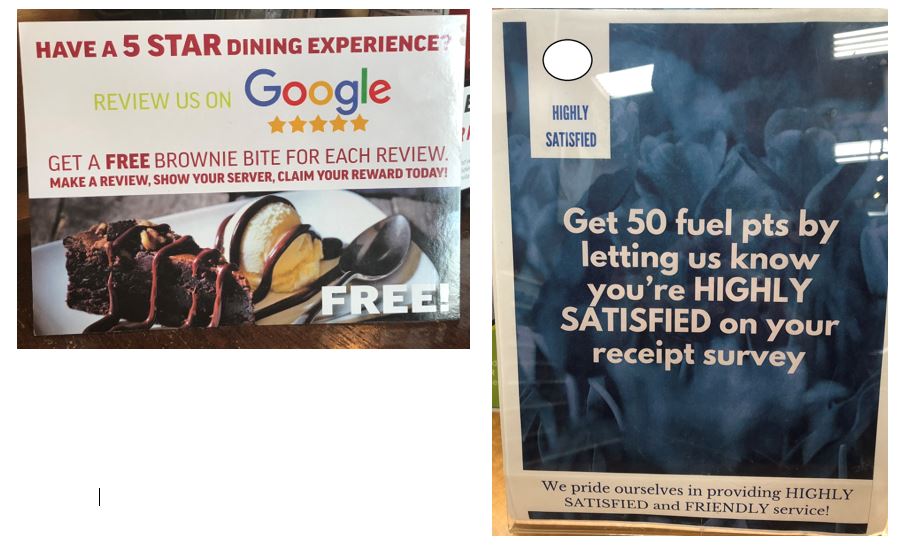What is wrong with the two pictures above?
Both were displayed prominently where a customer would see them. One at a dining table of a large restaurant chain and the other at the pharmacy counter at a national grocery store company.
Here are some rules that should be part of any customer feedback program. See if you can identify the rules that were broken for each of the above survey programs.
- The customer must feel comfortable giving constructive, or honest feedback.
- Respect the customer’s time! Any good survey should take the customer no more than three minutes to complete. If they want to donate additional time to provide more feedback, that is up to them.
- For feedback data to be valid, there should be no attempt skew the results by only soliciting positive feedback.
- The overall goal of any good customer feedback program is to open up a communication channel with your customer. Feedback that helps a company identify an opportunity for improvement is actually more valuable than a pat on the back saying everything is perfect.
- You must have a plan to respond to feedback for each question you ask. If you are not ready to respond, then don’t waste the customer’s time asking for their feedback.
- Feedback, including a customer’s suggestion to improve your product or service, must be shared within the organization in a timely manner. This includes your front-line employees who interact with your guest or customer.
- You must leave the customer feeling that you honestly want their feedback in an attempt to improve the way you serve them.
The picture on the left offering a free brownie bite violated the first rule. You had to show your survey to your server to claim your reward. The vast majority of the population would not be comfortable sharing constructive feedback directly with the person providing the service. We avoid confrontation unless the problem is extreme, and you are really upset.
This is similar to many car dealerships who offer a discount or free oil change if you bring your service or sales survey back to them directly to submit. No customer with half a brain believes that the dealership is interested in your honest feedback. The dealership is only attempting to manipulate the numbers to look good at the corporate office.
How could they have fixed this feedback program? Ideally, the submission of feedback should be completely anonymous. With today’s technology, this could be accomplished using a variety of methods. Although not perfect, an improvement would be to have the manager validate that the feedback was provided, thanking the customer for their time.
In the case above, it is clear that they are attempting to skew the results and only have “FIVE STAR” reviews showing up online. The picture from the pharmacy counter also has a flaw. It is clearly violating the third rule. They are only interested in “HIGHLY SATISFIED” feedback. They do not say that you will not get your 50 fuel points if you provide feedback other than this top rating, but you are led to feel that way. How could they have fixed this?
They should reword their sign to say something like the following:
“Our goal is to completely satisfy every customer.
To help us reach this goal, we value your honest feedback regarding our performance.
You will receive 50 fuel points for any survey completion.”
What would motivate a customer to take the time to provide feedback? Most would do so if they felt like the company was honestly interested in their comments and that they might help the company become better at what they do. The customer would then benefit from an improved product or service the next time they interacted with that organization.
If a customer questions the motives for the survey, they are unlikely to participate. Consumers are smart. They can see through a program that violates any of the rules above.
As you design your customer feedback program, review it using the seven rules above to see if you have designed a program that may collect meaningful feedback and lead to a continuous improvement culture within your company.
If you would like help from the CCCG team to review or design your customer feedback program, please contact us at info@CCCGINC.com.


0 Comments